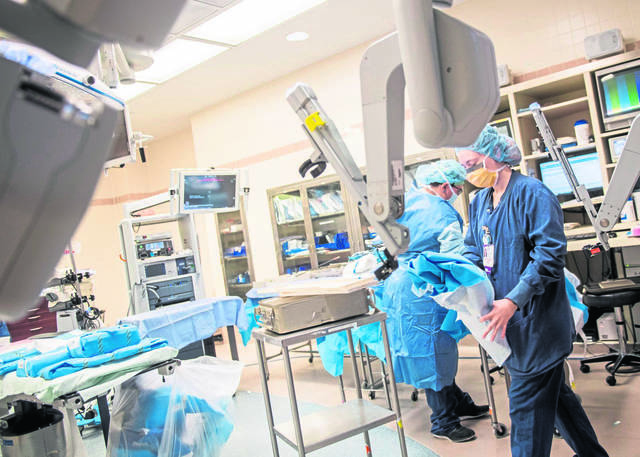Editorial: Hospitals need elective surgery to survive
There are some things we want back after weeks in a pandemic lockdown.
We want happy hour and Sunday brunch and a shopping trip that doesn’t feel like deploying on a military maneuver.
But there are other things we need.
New hips. Gallbladder removal. Coronary angioplasty to see if an artery is blocked and a tiny metal miracle needs to be inserted.
Until hospitals stopped performing them last month, elective surgeries were a huge part of what happened there every day. According to the Centers for Disease Control and Prevention, in 2010 alone, there were 48.3 million outpatient procedures — things like endoscopy and cataracts. That doesn’t count the scheduled inpatient procedures like cesarean sections or heart bypasses.
And it wasn’t just healthy for the patients. It kept the financial hearts of the hospitals beating, too. The surgeries funnel $10,000, $20,000, $30,000 or more into hospital coffers and from there into employee paychecks.
So let’s applaud Pennsylvania’s plan to let the procedures happen again.
Elective surgery was discontinued to save on protective equipment for frontline medical personnel. Secretary of Health Rachel Levine said hospitals can resume if they have enough of the gear and if they can limit the numbers to prevent being overwhelmed in the event of a coronavirus surge.
This is good news because heart conditions and deteriorating hips won’t wait for a pandemic to evaporate before getting worse.
But a hospital could expire rapidly without the lifeblood of circulating cash.
Federal and state programs have been advanced to help hospitals make it through with loans and support, but those short-term measures are like splints. They are a temporary first-aid measure until the problem can be fixed. Getting back to business is what provides the cure.
It absolutely has to be done safely, and Levine’s guidelines supply that framework. Now it’s up to the hospitals to implement it through intellect and creativity. Stagger surgeries. Book fewer procedures. Systems with multiple hospitals could designate some facilities for covid-19 patients and some for other activities.
We can’t ignore the fact that hospitals are also very much about billing and bottom lines. Medical costs are a major contributor to bankruptcy filings for many people. Nationwide, health care is a $3.6 trillion business according to the Centers for Medicare and Medicaid Services.
But it’s also a business that keeps people alive with both medicine and paychecks.
Now it is incumbent on the hospitals to prove that if we can have one thing back, it’s the hospitals that we knew two months ago — places where we went for more than just emergencies, places that kept us healthy every day.
Remove the ads from your TribLIVE reading experience but still support the journalists who create the content with TribLIVE Ad-Free.

